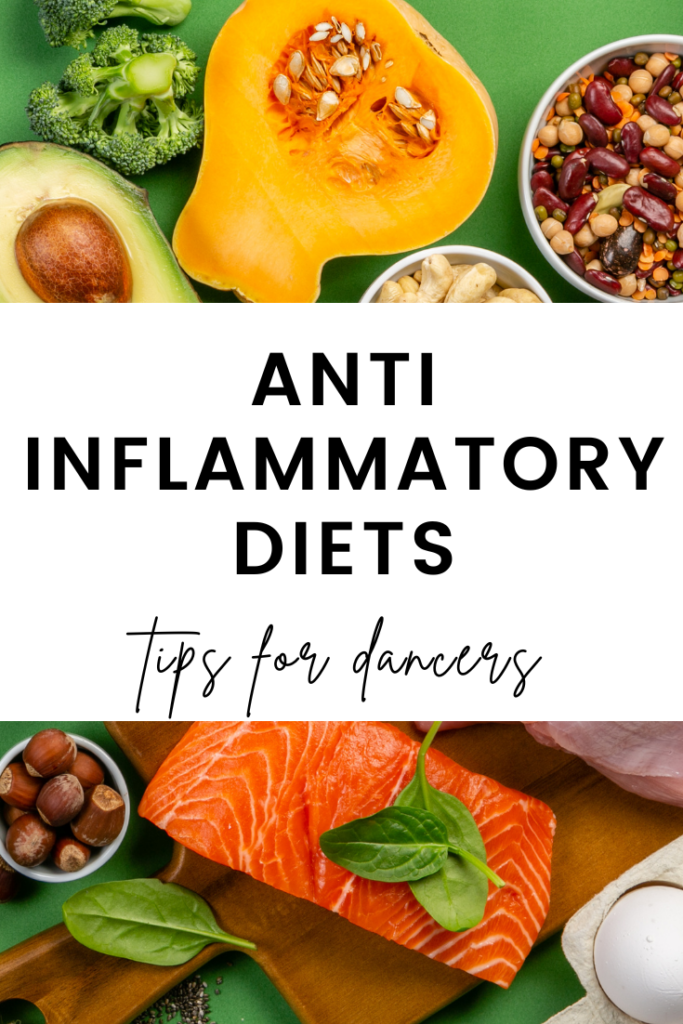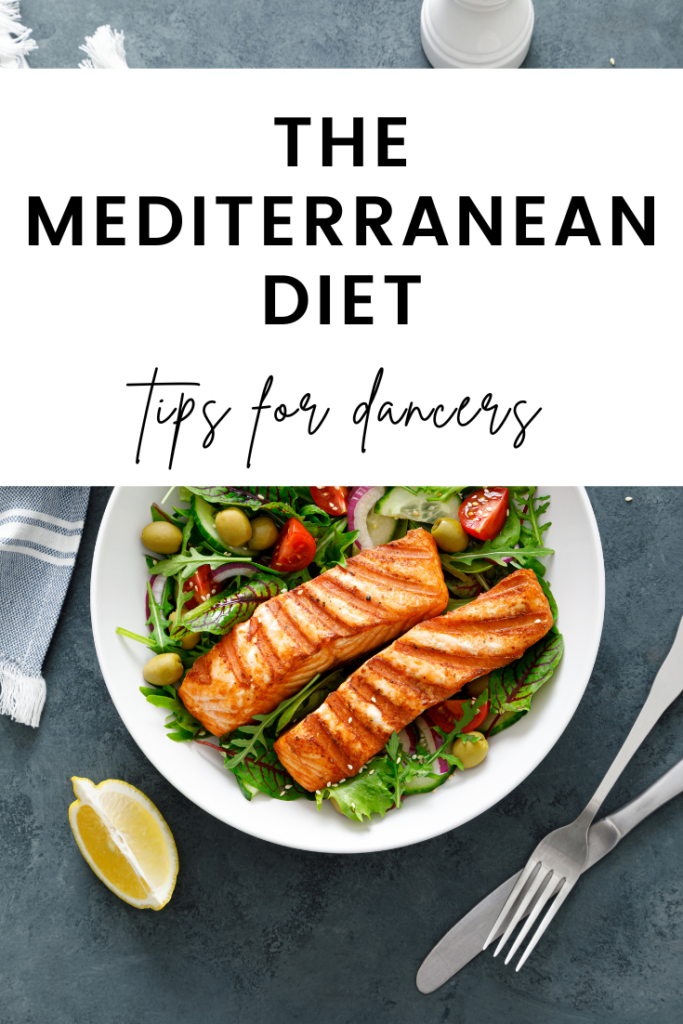Anti-inflammatory diets are appetizing for dancers, especially given speculations surrounding intense athletic performance and inflammation. But is an anti-inflammatory diet a dancer’s key to both health and career longevity? This article will cover everything you need to know.
What is inflammation?
Inflammation is the body’s response to physical trauma or stress (not psychological stress). We can generally categorize the body’s inflammatory response into two different types: acute and chronic. Acute inflammation is often temporary and experienced after a physical injury (ie. stress fracture), infection, or adverse reaction (ie. allergies). Increased blood flow, rashes, and swelling are just some of how an acute inflammatory response presents itself and though uncomfortable, this response is a necessary tool in the body’s ability to heal. In this sense, inflammation is a good thing as it’s both a defense tool against worsening sickness and a tool for healing.
Chronic inflammation, however, exemplifies a prolonged bodily response to stress and is often brought into conversations involving various diet and lifestyle choices. This is because low-grade, chronic inflammation is associated with the metabolic syndrome— a compilation of conditions that may lead to heart disease, diabetes, stroke, and other health problems. Chronic inflammation is also known to play a role in various autoimmune disorders. Whether chronic inflammation is a cause or a symptom of such diseases is lesser known, but it’s safe to say that as a community, medical and nutrition professionals alike are anxious to better understand how, at best, to alleviate this type of inflammation.
Inflammation and Lifestyle Choices
Over the years, several studies have suggested associations between a variety of lifestyle choices and chronic inflammation, including:
- Physical inactivity and its role in low-grade chronic inflammation
- Psychological stress and its role in low-grade chronic inflammation
The Role of Food and Nutrition on Chronic Inflammation
Wellness culture is notorious for cherry-picking information as a way to peddle restrictive eating plans. In fact, a quick and informal Google search will present a plethora of articles (both scientific and mainstream) about what we, as consumers, can do to reduce pro-inflammatory behaviors and increase anti-inflammatory behaviors. This is often the point when nutrition comes into the story. In regard to food, those ridiculed for being pro-inflammatory include:
- Processed meats such as ham, bacon, hot dogs, and deli meat
- Trans-fats (found in deep-fried foods and some shelf-stable, packaged foods like baked goods)
- Refined sugar and other added sweeteners like corn syrup
- Ultra-processed foods that are rich in refined carbohydrates (ie. packaged muffins and snacks)
But are these foods all there is to blame for chronic inflammation? And is this reason enough to completely avoid them? The answer is no.
Move more and eat “healthier”… is this the recipe for reducing inflammation?
Though it’s easy to fixate on the above “lifestyle choices” (mainly food and exercise) as presumably controllable factors in fighting chronic inflammation, there is WAY more to consider. First, let’s review the other known factors associated with chronic inflammation:
- Weight cycling, a common result of restrictive eating habits, is associated with prolonged inflammation.
- Intense exercise is associated with elevated inflammatory biomarkers (a consideration for those struggling with over-exercising)
- Research shows that experiencing weight stigma can contribute to ongoing stress, which in turn may play a role in chronic inflammation.
It’s also important to recognize that access to fresh or minimally processed foods isn’t the same for everyone— it can depend on location, budget, and availability. As a result, anti-inflammatory diets often over-generalize recommendations, glorifying some foods while vilifying others— a recipe for food guilt, mealtime stress, and you guessed it… disordered eating. Arguably, this can negatively impact many— especially those who do not have the access to keep up with stringent lifestyle changes (notably, “clean” eating).
The Mediterranean Diet
Year after year, the Mediterranean diet prevails in the rankings as a gold-standard option for supporting “health.” Briefly, this diet is characterized as high in minimally processed foods like whole grains, and versatile with a high volume of fruits and veggies. Lean proteins are prioritized and plant foods are heavily encouraged. The main sources of fat in the diet come from plant oils, avocados, nuts, seeds, and fatty fish. Though not considered to be fully “off-limits,” foods rich in animal fats (meat, butter), along with sources of added sugars (processed foods) are often discouraged.
Some nutrition professionals point out that the Mediterranean diet shares similarities with what’s often called ‘clean eating.’ In fact, the term ‘anti-inflammatory’ is sometimes used in ways that resemble past clean-eating trends.
When compared to many other diets, there is a great deal of research supporting the benefits of the Mediterranean diet. In 2021, researchers presented findings on the benefits of the Mediterranean diet with added nuts or olive oil in lowering blood levels of inflammatory markers (indirectly reducing the risk of heart disease). But much of these findings have been questioned since the original study was both biased (economically funded by nut and olive industries pushing for favorable findings) and flawed (limitations in study design). Some believe the Mediterranean diet to be less restrictive and even more sustainable long term. But for those struggling with disordered eating or at a higher risk for the development of disordered eating (like the population I specialize in, dancers), anti-inflammatory diets like the Mediterranean diet can still spiral into overwhelming food rules.
How can we implement lifestyle choices that favor anti-inflammation?
It’s essential to consider the context. Incorporating nutrient-dense foods into your meal plan is always encouraged when accessible. But one thing is certain: any behavior that exacerbates disordered eating can lead to more stress.
Rather than attempting to abide by any one specific anti-inflammatory diet, we can utilize tools like food flexibility and gentle nutrition to incorporate a variety of nourishing options into our meal plans without obsessing over them. Nourish The Healthy Dancer® is designed to do exactly this. Here’s another article that talks about some specific foods dancers can add to their meal plans— many of which are rich in vitamins, minerals, and antioxidants. Furthermore, tools that support stress management— adequate sleep, meditation, and mindful movement— can help.




